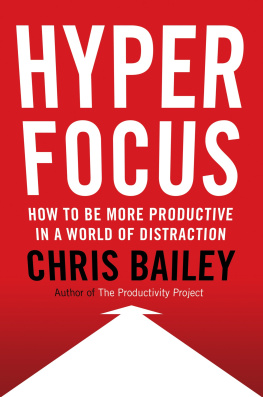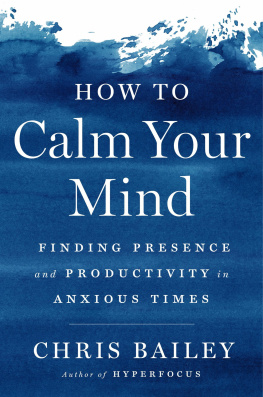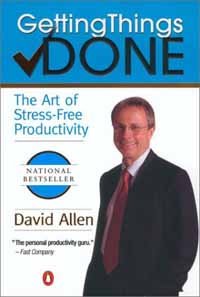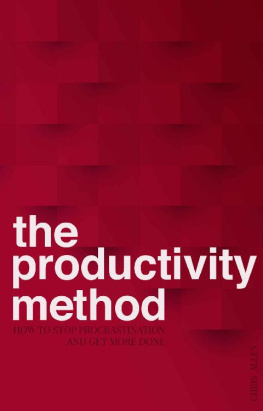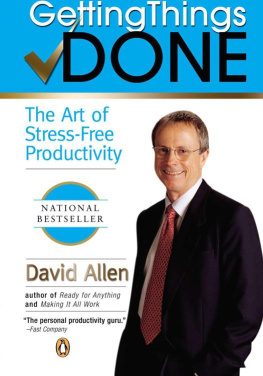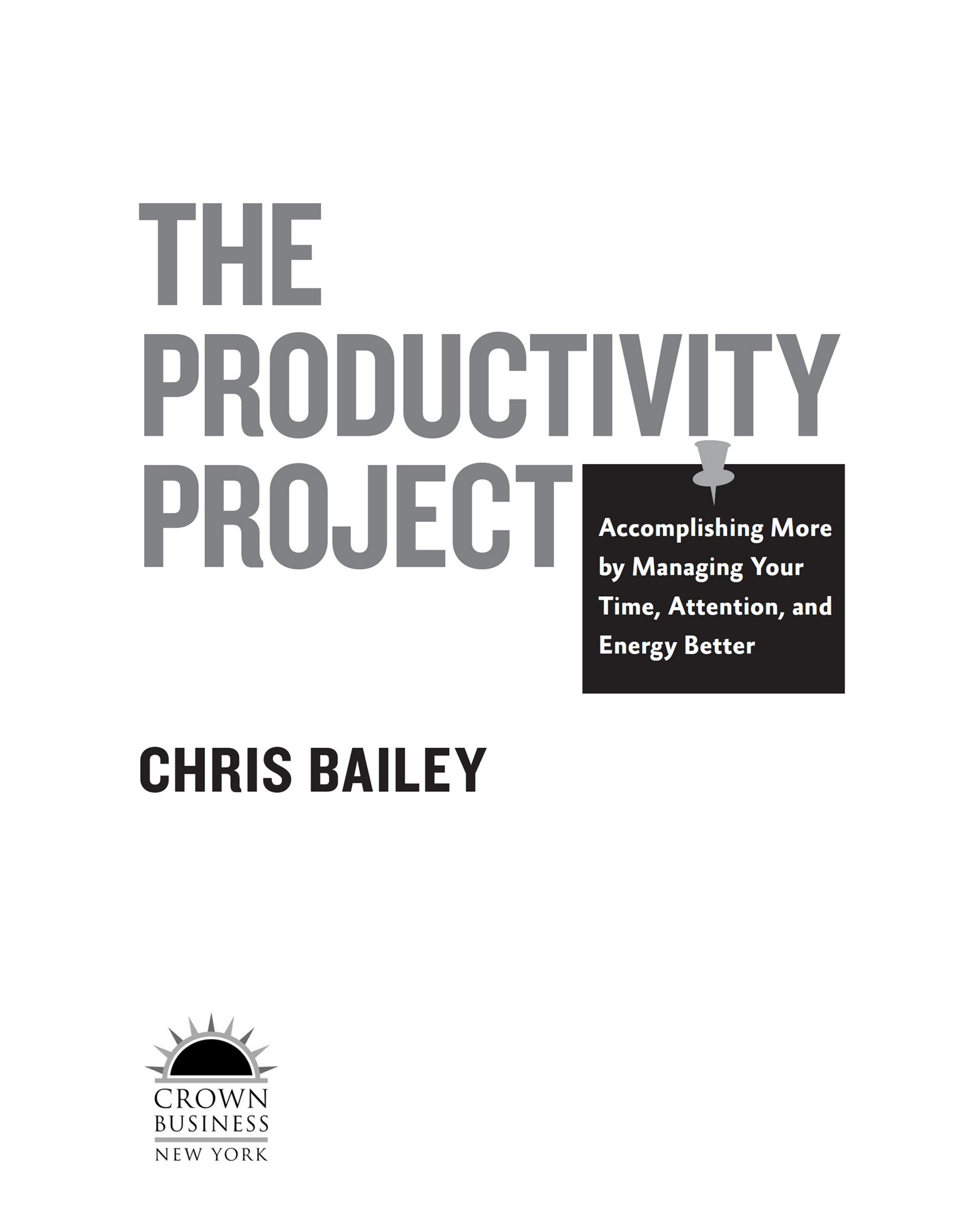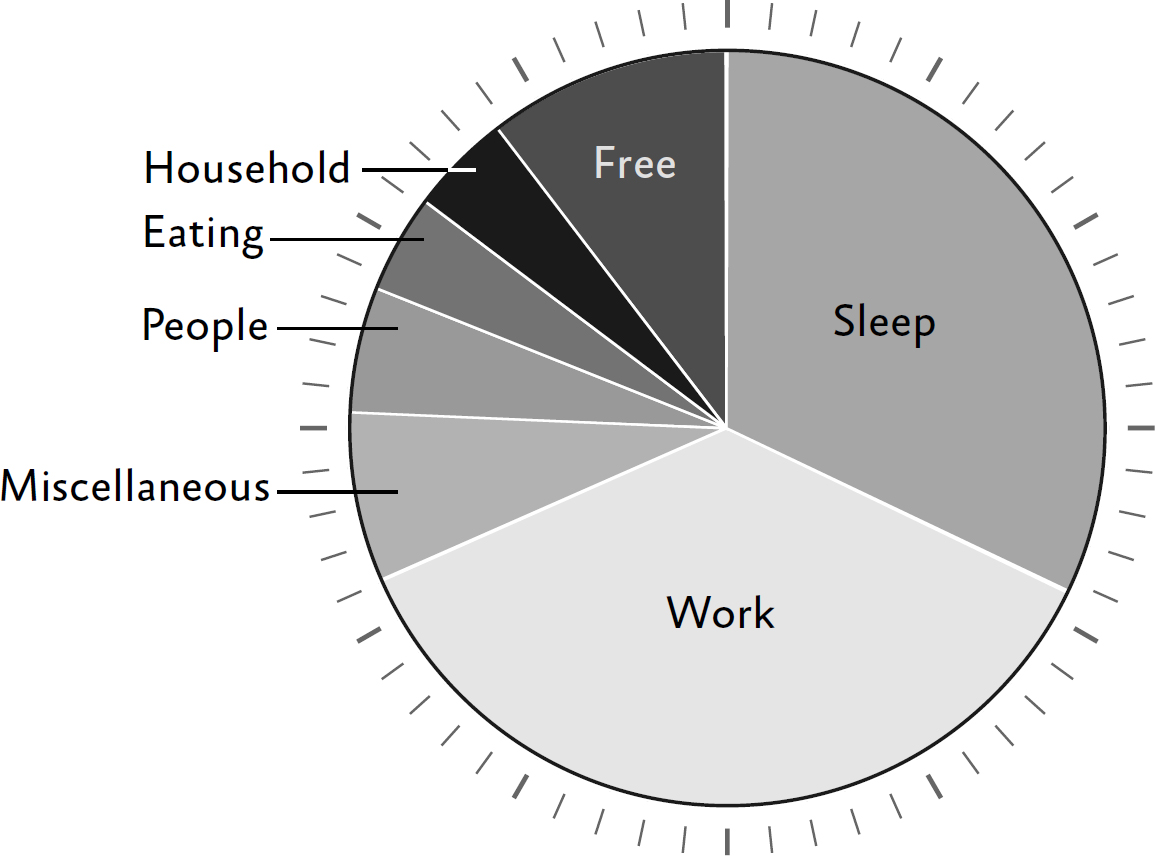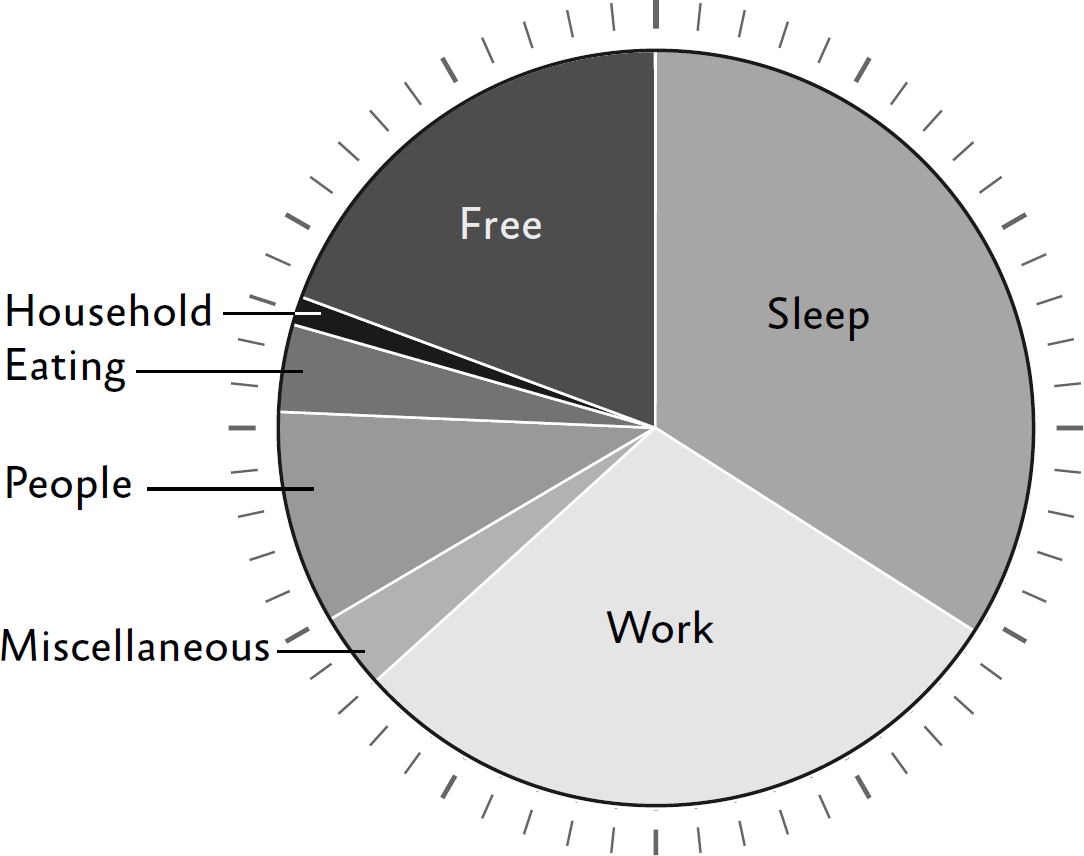All rights reserved.
Published in the United States by Crown Business, an imprint of the Crown Publishing Group, a division of Penguin Random House LLC, New York.
CROWN BUSINESS is a trademark and CROWN and the Rising Sun colophon are registered trademarks of Penguin Random House LLC.
Crown Business books are available at special discounts for bulk purchases for sales promotions or corporate use. Special editions, including personalized covers, excerpts of existing books, or books with corporate logos, can be created in large quantities for special needs. For more information, contact Premium Sales at (212) 572-2232 or email .
The productivity project : accomplishing more by managing your time, attention, and energy better / Chris Bailey.
1. Time management. 2. Distraction (Psychology) 3. Industrial productivity. I. Title.
INTRODUCTION




Estimated Reading Time: 6 minutes, 41 seconds
While some people have normal interests like sports, music, and cooking, as strange as it might sound, I have always been obsessed with becoming as productive as possible.
I cant remember when I was first bit by the productivity bug. It could have been when I picked up David Allens canonical Getting Things Done book in high school, when I started diving deep into productivity blogs as a young teenager, or when I began exploring my parents collection of psychology books around the same timebut Ive been obsessed with productivity for the better part of a decade, and over that time Ive brought that obsession to virtually every facet of my life.
In high school, I began to experiment with as many productivity techniques as I could find, which let me graduate with a 95 percent average while carving out huge swaths of time for myself. At Carleton University in Ottawa, I studied business where I did much the same thing, deploying my favorite productivity tactics to keep an A average while doing as little work as I possibly could.
While in school, I had the chance to experiment with productivity techniques at several real-world full-time co-op internships, including one yearlong job where I autonomously hired about two hundred students for a global telecommunications company, and another where I worked from home for a global marketing team, helping the team create marketing materials and coordinate video shoots around the world.
Because of my hard work (and productivity), my school awarded me their Co-op Student of the Year Award, and I graduated from the university with two full-time job offers.
THE POINT OF PRODUCTIVITY
I dont mention what Ive accomplished to try to impress you, but rather to impress upon you how powerful of an idea productivity can be. As much as Id sometimes like to think so, I wasnt offered two full-time jobs out of college because Im particularly smart or gifted. I simply think I have a very firm grasp of what it takes to become more productive and get more done on a daily basis.
Although the jobs and school were fun, at the end of the day I was truthfully much more excited that I had a chance to use both contexts as sandboxes to filter out the productivity tactics that work from the ones that didnt.
To see the profound effects that investing in your productivity can have, look no further than to how the average American spends his or her day. According to the most recent American Time Use Survey, the average employed person aged twenty-five to fifty-four with kids spends:
8.7 hours a day working
7.7 hours a day sleeping
1.1 hours a day on household chores
1.0 hours a day eating and drinking
1.3 hours a day caring for others
1.7 hours a day on Other
2.5 hours a day on leisure activities
Every day we get twenty-four hours to live our lives in a meaningful way. But once you account for all the obligations each of us has, there really isnt much time left; a paltry two and a half hours for most of us, to be exact. Ive converted the numbers into a pie chart to illustrate just how little time in our day that is:
This is where productivity can come to the rescue. I think productivity tacticslike the ones that I discuss in this bookexist to help you accomplish everything you have to do in less time, so you can carve out more time for whats actually important and meaningful in your life. Productivity is what makes the difference between someone who runs a company and the employees who work for her. It is also the difference between having no time or energy left at the end of the day and having a ton of time and energy left over to invest however you want.
Obviously you can use the tactics in this book however you want; my approach has always been one of striking a balance between carving out more time and energy for the things that are meaningful to me, and accomplishing more. This approach simply fits with the way I think. I like to accomplish and do cool things, but I also love having the freedom to spend my time as I please.
When you take the time to invest in your productivity, and use what you learn to carve out more time for what matters most to you, I think its entirely realistic that your average day could look a little more like this:
At least, thats what Ive found during my decade of intense experimentation with productivity.
A YEAR OF PRODUCTIVITY
I was caught on the horns of a dilemma. Both job offers I had received had great starting salaries, promises of career advancement, and looked like a lot of fun on the surface. But as I began to think about each of them more deeply, I came to the realization that they werent really what I wanted to do with my life.


